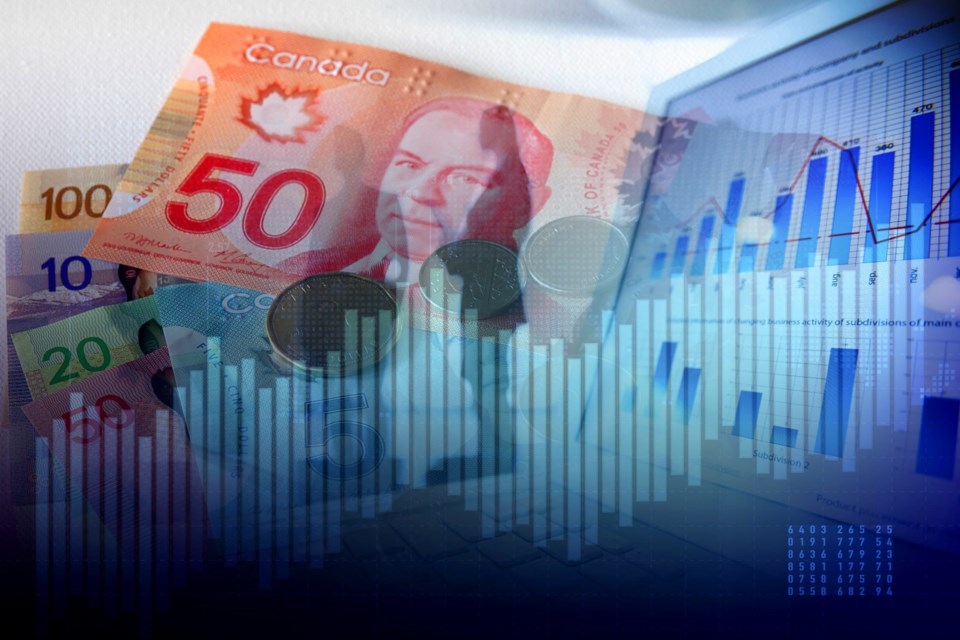The Trudeau government deserves a big chunk of the blame for rising mortgage payments.
There are many factors that cause inflation. But Ottawa’s never-ending deficits, tax hikes and money printing helped push inflation to a 40-year high. Without this inflation, the Bank of Canada would have little reason to raise rates, and Canadians wouldn’t be worried about their mortgage payments going through the roof.
Finance Minister Chrystia Freeland acknowledged more government borrowing means higher inflation.
“We cannot compensate every single Canadian for all of the costs of inflation,” Freeland last fall. “To do so would only make inflation worse and would force the Bank of Canada to raise interest rates even higher.”
But the feds already lost control of the fiscal reins.
The feds were spending all-time highs before the pandemic in , even after accounting for inflation and population growth.
Then the government announced it would spend an extra $576 billion from 2019 to 2026. And $204 billion of this extra spending had nothing to do with the pandemic, according to the Parliamentary Budget Officer.
Prime Minister Justin Trudeau initially said he’d balance the budget in 2019. Then Freeland said she’d balance the budget in 2027. Now they’re not even paying lip service to balanced budgets. The PBO’s data pegs the next balanced budget in 2041.
But out-of-control spending and never-ending deficits are only part of Canada’s inflation story. The other part is how the deficits were financed: the printing press.
The more dollars the central bank prints, the less Canadians’ dollars can buy. That’s the inflation tax.
It’s especially pernicious when newly printed dollars are dropped into an economy that is largely shutdown. That creates too many dollars chasing too few goods and prices go up.
The Bank of Canada was on overdrive during the pandemic, printing about $370 billion by purchasing financial assets like government bonds between March 2020 and 2022.
That 300-per-cent growth in the bank’s assets is significantly higher than what occurred during the recessions of the 1970s, 1980s and 1990s. It’s even higher than the growth from the beginning of 2008 to the end of February 2020.
Ottawa’s deficit spending directly ties into the money printing. For example, just two days after Freeland announced her plan to run a deficit of about $3 billion per week in 2021, the Bank of Canada announced its plan to purchase $3 billion worth of government debt per week.
The cherry on top: tax hikes.
The objective of the federal carbon tax is to increase prices. The government’s own numbers show the carbon tax increases the price of gas by 14 cents per litre, the price of diesel by 17 cents per litre and the price of natural gas by 12 cents per cubic metre. By 2030, Trudeau’s carbon taxes will increase the price of gas by 55 cents per litre.
The head of Bank of Canada, who is raising rates to combat the rising cost of living, acknowledged that Trudeau’s carbon tax pours fuel on the inflation fire.
Rate hikes also mean more tax dollars wasted paying interest on the $1-trillion federal debt.
“Just a one-point increase in interest rates would then increase the annual deficit by close to $5 billion,” Jack Mintz, a University of Calgary economist, explains.
Taxpayers pay about $3.6 billion every month to cover federal debt interest charges. For context, this year’s interest charges cost about 90 per cent of the entire Canada Health Transfer to the provinces. By 2027, federal interest charges are expected to exceed $50 billion – more than double the pre-pandemic level.
Higher interest rates are hurting Canadians, especially when they pay their mortgages. The government is a key driver of inflation and that’s driving up interest rates. It’s time for Ottawa to get its own budget under control because family budgets can’t afford more rate hikes.
Franco Terrazzano is the Federal Director of the Canadian Taxpayers Federation



